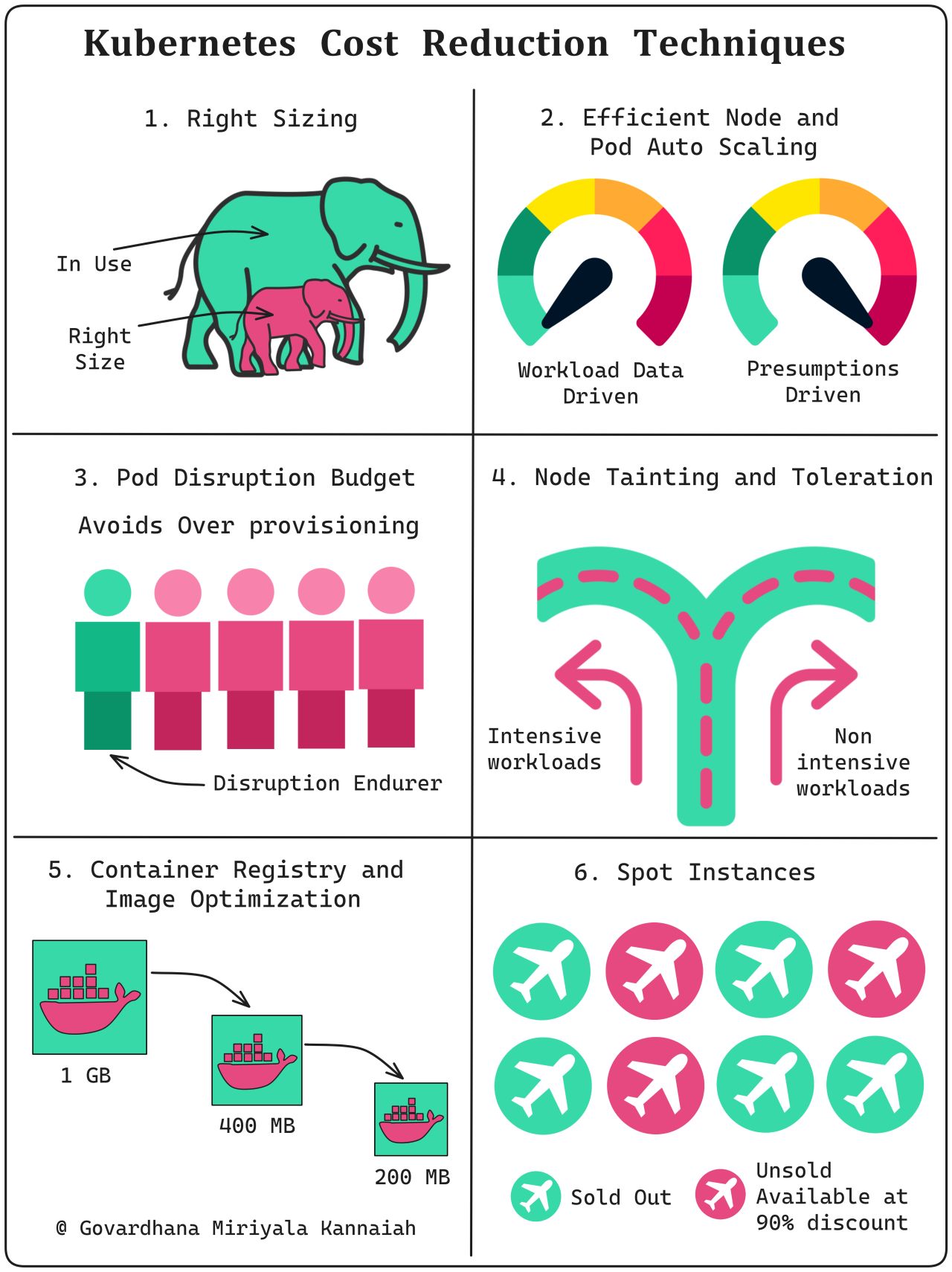Kubernetes Cost Reduction Techniques
Each technique enables organizations to optimize Kubernetes usage and minimize expenses
𝟭. 𝗥𝗶𝗴𝗵𝘁-𝘀𝗶𝘇𝗶𝗻𝗴 𝗿𝗲𝘀𝗼𝘂𝗿𝗰𝗲𝘀:
Analyze app resource usage, adjust CPU/memory as needed. Avoid over-provisioning to save costs
𝟮. 𝗘𝗳𝗳𝗶𝗰𝗶𝗲𝗻𝘁 𝗡𝗼𝗱 & 𝗣𝗼𝗱 𝗔𝘂𝘁𝗼 𝗦𝗰𝗮𝗹𝗶𝗻𝗴:
Enable cluster auto-scaling and use Horizontal Pod Autoscaler (HPA) and Vertical Pod Autoscaler (VPA) to add or remove nodes / pods based on resource utilization, reducing idle costs
𝟯. 𝗣𝗼𝗱 𝗗𝗶𝘀𝗿𝘂𝗽𝘁𝗶𝗼𝗻 𝗕𝘂𝗱𝗴𝗲𝘁 (𝗣𝗗𝗕):
Set up PDBs to control how many pods of a specific deployment or replica set can be down simultaneously during disruptions, ensuring high availability without overprovisioning
𝟰. 𝗡𝗼𝗱𝗲 𝗧𝗮𝗶𝗻𝘁𝗶𝗻𝗴 𝗮𝗻𝗱 𝗧𝗼𝗹𝗲𝗿𝗮𝘁𝗶𝗼𝗻:
Taint nodes for workload-specific delays, prioritize critical tasks on untainted nodes, and use cheaper tainted nodes for less critical tasks
𝟱. 𝗖𝗼𝗻𝘁𝗮𝗶𝗻𝗲𝗿 𝗥𝗲𝗴𝗶𝘀𝘁𝗿𝘆 & 𝗜𝗺𝗮𝗴𝗲 𝗢𝗽𝘁𝗶𝗺𝗶𝘇𝗮𝘁𝗶𝗼𝗻:
Use cost-efficient container registry, follow image best practices (e.g., multi-stage builds) for smaller images and reduced pull times & storage costs
𝟲. 𝗦𝗽𝗼𝘁 𝗶𝗻𝘀𝘁𝗮𝗻𝗰𝗲𝘀:
Utilize spot instances for non-critical tasks; they're cheaper but can be terminated quickly. Ideal for stateless, fault-tolerant apps
𝗡𝗼𝘁𝗲:
It's recommended to carefully consider the impact on your specific workloads and seek expert advice as necessary



Comments
Post a Comment